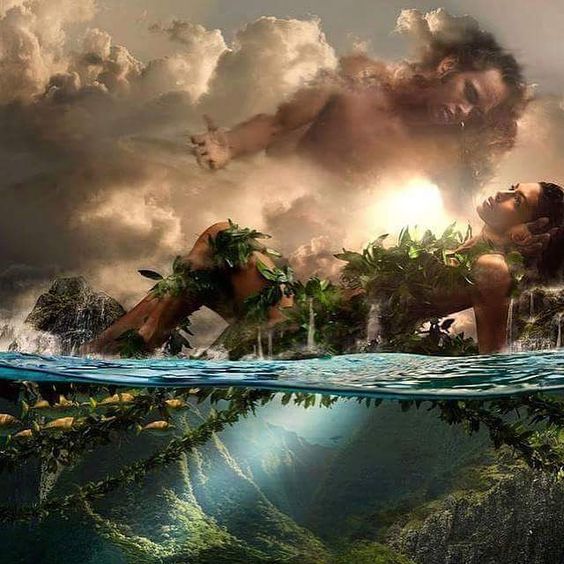Lindsay Mitchell
Lindsay Mitchell blogs here
An ODT opinion piece recently parodied the rapid adoption of Maori names for government departments. It drew attention to the renaming of the Earthquake Commission as Toka Tu Ake EQC which apparently “reflects the whakapapa of our nation.” The name-change decision was made by the Minister and cabinet.
The Commission site contains a section about their new Maori name.
In the beginning, Ranginui (sky father) and Papatuanuku (earth mother) were joined in such a strong embrace it created darkness. When their sons separated them to create light, Ranginui grieved so much for Papatuanuku that his tears flooded the land. Their sons turned Papatuanuku over so their parents would not face each other and see each other’s sorrow.
Ruaumoko is the youngest, unborn son of Ranginui and Papatuanuku. He was turned toward the earth in his mother’s womb. His brothers gave him fire so he could warm himself in the darkness. Being so closely tied with his mother, Ruaumoko felt her pain at the separation. When he stirs, he expresses his anger through geothermal currents, earthquakes, and volcanic eruptions. As we live alongside Ruaumoko’s rumblings and Ranginui’s tears, EQC’s role is to help make our homes stronger, ensure new homes are built on better land, and provide support when damage occurs.
Are these characters any different to Adam and Eve? Creation myths sit at the basis of religious belief. Imagine then Christian biblical stories and imagery appearing on Ministry websites to explain their reason for being and values. It would not happen.
In a 2013 Otago University lecture Andrew Bradstock said:
“…there is a shared perception here that religion is principally for the private not the public domain. This was given a degree of official endorsement in July 2010 when a draft report on “Human Rights in New Zealand Today” was released by the Human Rights Commission. This carried a statement that “Matters of religion and belief are deemed to be a matter for the private, rather than the public, sphere.” The wording was subsequently changed following complaints (though the text is still on the HRC website), but it would be hard to dispute the claim that we generally feel more comfortable if individuals or organisations, when speaking publicly, refrain from parading openly any religious convictions they may have.”
Doesn’t the promotion of Maori mythology fall into the domain of parading religious convictions?

And it isn’t just the Earthquake Commission.
The Reserve Bank postulates,
“How Tane Mahuta can explain our financial system. Maori oral traditions tell us that Tane Mahuta dug his shoulders into Papatuanuku (earth mother) and used his legs to push against Ranginui (sky father), separating them and letting the light into the world. With that light, Tane Mahuta, guardian of the forest and birds, enabled life to thrive.”
The Climate Change Commission explains its Maori name, He Pou a Rangi: Ingoa Maori:
“The simplest translation of He Pou a Rangi is ‘a pillar of the sky’. The concept considers our role as upholders of the sky. We are honouring the sky and in turn, have a duty to care for it. Using ‘He’ Pou (‘a’ pillar) rather than ‘Te’ Pou (‘the’ pillar) recognises that we are one of many pou or organisations working together to address climate change. Pou can uphold, provide a point of connection, protect, and provide stability. In a te ao Maori view, pou provide a two-way connection, both upholding and uplifting what is above, but also connecting and grounding with what is below. Pou connect Ranginui, the sky father, to Papatuanuku, the earth mother.”
There are many more examples occurring across various government websites and in the documents they generate. Law lecturer David Griffiths refers to, “…state concessions to indigenous Maori spirituality that are now commonplace in legislation and other governmental actions.” That was sixteen years ago.
Ironically, and somewhat inexplicably, the developments have been accommodated by people who have no truck with Christianity – liberal atheists. The pace of change has accelerated under the woke left.
Back in 1996, Justice Heron argued ‘the courts were “secular” institutions and he declared that “involving any person in a karakia against their personal wishes” was “insensitive and unacceptable” ‘.
Yet a recent meeting of state-employed health professionals with no Maori people in attendance still featured the obligatory karakia delivered by a non-Maori female. When asked why, the answer received was, “Their belief in equity.” Was a Christian or any other prayer offered? No. So much for equity.
Just as people baulk at the imposition of mythology to explain matters of science, there will be those discomfited by the routine practice of karakia (especially given the diversity of cultures and beliefs of those working within the New Zealand health system, which is almost entirely publicly run).
The solution is not to start offering sops to every other religious belief that exists in New Zealand. To put it crudely – two wrongs do not make a right.
The answer is to re-establish the traditional and necessary secularism of the state.
In the United Kingdom where awareness and objection to the problem is more acute, an organisation has been formed which maintains,
“Public services that are intended for the whole community, especially those funded by public money, should be provided in a secular context, open to all, without discriminating against anyone on grounds of religion/belief – either the people who are served or employed.”
Amen to that – or whatever the secular equivalent is.
